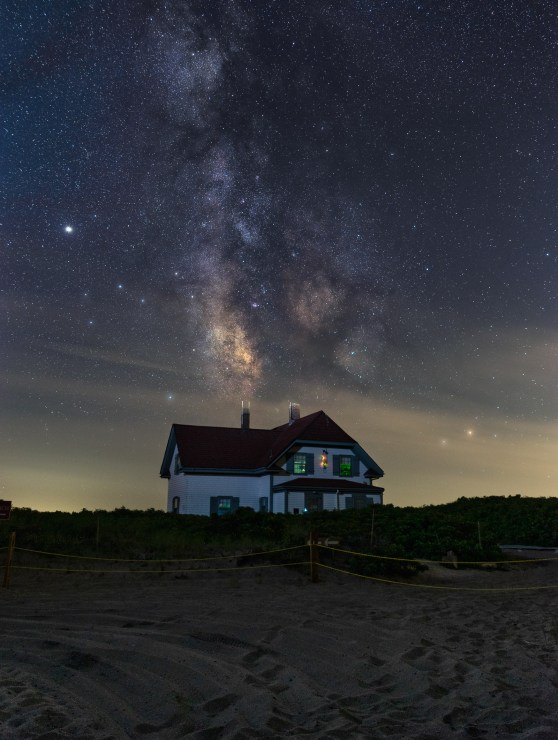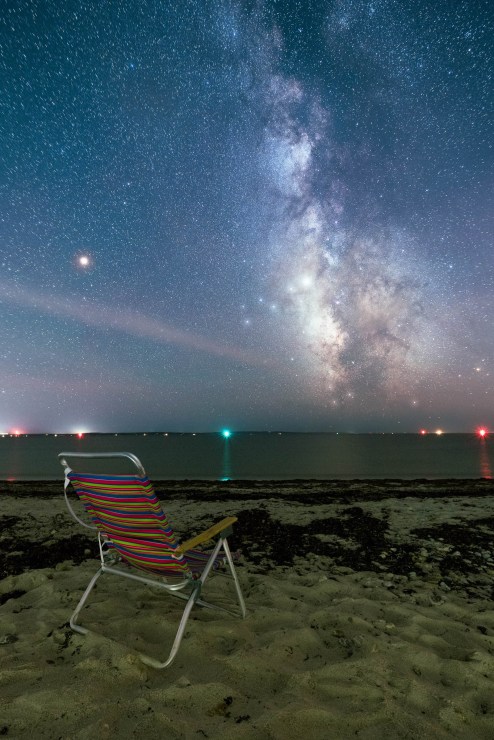The Pentax K-1’s Astrotracer is one of many features that makes the Pentax K-1 one of the greatest DSLRs made, and one of the best cameras for night photography. Here, we’ll discuss five easy steps to creating cleaner, more detailed images.

What does the Pentax Astrotracer do?
In a nutshell, the Astrotracer tracks stars using GPS data to shift its sensor during longer exposures. This allows you to shoot longer exposures without star trailing. Tracking celestial bodies results in better rendering of detail and less noise while capturing the stars as pinpoints of light rather than long trails.
Astrotracer functions similarly to an equatorial mount, but of course without the added money, weight and setup time. While the Astrotracer may not always photograph for as many minutes as a dedicated equatorial mount without artifacts, it still is quite effective.
Note that since the sensor is shifting the image in synchronization with the stars, any landscape you have in your image will come out blurry. This is not a problem for astrophotography. However, if you want landscape in your images, you will need to take a second photo and blend that with the image created using the Astrotracer.

How do you use the Pentax Astrotracer?
Step 1: Turn on the built-in GPS
Press the GPS button on the top of the camera, located to the right of the hot shoe to activate the built-in GPS. An orange light next to the button will indicate the GPS is on. Note that you cannot turn the GPS on or off if you are in Menu mode. You will see a small GPS signal indicator. It looks like a satellite on the top of your settings or Live View screen when your GPS is on.
Step 2: Calibrate GPS

Next, we calibrate the GPS so that it will track the stars. Go to the Settings 2 menu and select the GPS/E-Compass, followed by Calibration.

The K-1 will walk you through what to do next via on-screen instructions. It will tell you to rotate your camera on three different axes at least 180 degrees. This requires you to do a fun and easy “spin dance.”
After that, you will see a Calibration Complete notice. If this doesn’t work, simply move a few feet or wait to obtain a stronger signal.
Step 3: Turn on Astrotracer
Now, we will turn on Astrotracer.

Activate it in by pressing the Menu button and proceeding to Camera 3 > Astrotracer as shown above.
Step 4: Precise Calibration of Astrotracer

While in the same Camera 3 Astrotracer menu area, also select Precise Calibration to calibrate the Astrotracer. You will do the same “spin dance” that you did when calibrating the GPS.

Step 5: Time to photograph!

Make sure your camera is set to Bulb mode and manual focus, and that all your settings are adjusted. Then begin clicking away!

More about Astrotracer with the K-1
Do remember that because the sensor is tracking the stars, any foreground will be blurred. You will either need to take photos of the stars only or take another photo of the foreground with Astrotracer turned off and blend that in later.
We discuss the above as well as using legacy lenses, calibrating the camera, preferred lenses and many practical real-world usage with night photographer Timothy Little in a future article.

See more of Timothy Little’s photography
Timothy Little is a gifted photographer who makes a living specializing in night photography and light painting. He is an avid user of Pentax K-1’s Astrotracer feature and creates vivid night and Milky Way photos along the East Coast.
Catch up with Timothy Little’s photography and workshops on his Cape Night Photography website.
Tell your story with the second annual Visual Storytelling Conference!
Experience four days of interactive, online training sessions featuring a range of educational content with experienced photographers and content creators. This free event kicks off with a series of technical boot camps to build essential skills, followed by live, online sessions on photography, video, business and social media. Join live from March 10-13, 2022!
